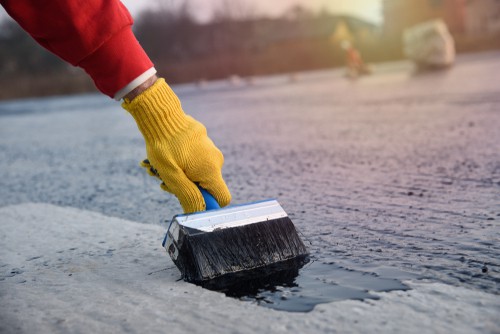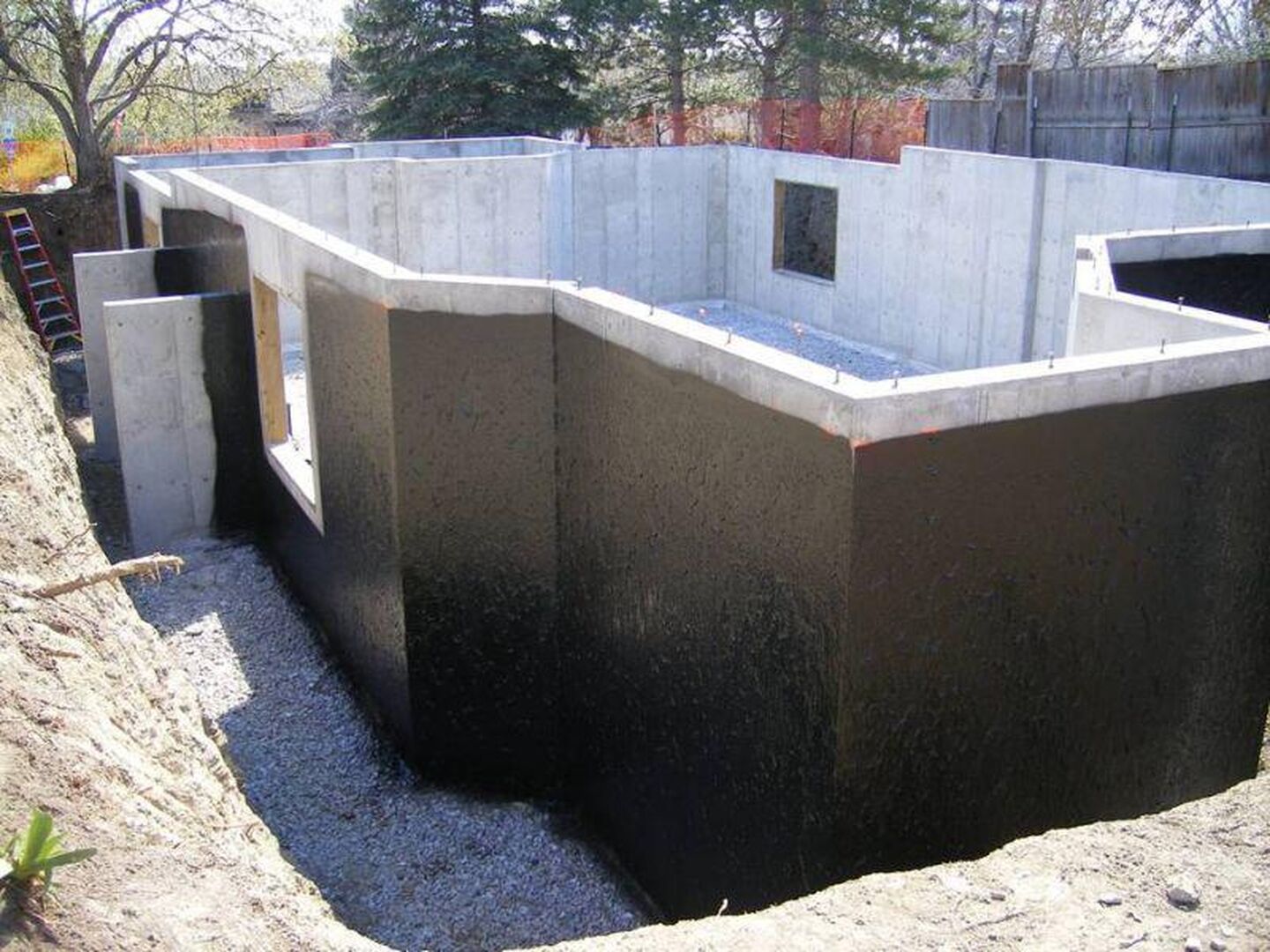The Hidden Costs of Ignoring Water Solutions in Your Home
Kinds of Waterproofing: Exploring the Various Methods and Their Applications
Waterproofing is an essential aspect of building and upkeep. It shields structures from the detrimental impacts of water damage. There are numerous approaches offered, each with its special applications and advantages. From membrane systems to cementitious options, recognizing these alternatives is essential for efficient implementation. The choice of waterproofing technique can substantially influence durability and longevity. Discovering these different techniques reveals their unique advantages and potential challenges, prompting further consideration of excellent remedies.
Membrane Waterproofing Systems
Membrane layer waterproofing systems work as an essential obstacle versus water invasion in different structures. These systems generally are composed of slim sheets made from products like rubber, thermoplastic, or bitumen, which are related to surface areas to avoid dampness infiltration. They can be set up above or below grade and are particularly reliable in locations susceptible to high water exposure, such as cellars, roofings, and foundations.The setup procedure includes cleaning up the substratum, using adhesives or guides, and specifically fitting the membrane to guarantee total insurance coverage. Membrane systems can be either totally adhered, mechanically affixed, or laid loose, relying on the certain requirements of the job. They offer sturdiness and adaptability, accommodating architectural movements without jeopardizing their waterproofing capabilities. These systems can be enhanced with extra layers for improved protection. Inevitably, membrane waterproofing systems are crucial for protecting frameworks against water damages and maintaining long-lasting integrity.
Liquid-Applied Waterproofing Coatings
Liquid-applied waterproofing layers provide a flexible remedy for safeguarding surface areas from water infiltration - Water Solutions. These finishes include fluid materials that, when applied, develop a smooth, flexible membrane. Their versatility permits for application on various substrates, including concrete, metal, and timber. The layers can be utilized in varied settings, from household to industrial settings, making them ideal for roofs, foundations, and below-grade structures.One substantial benefit of liquid-applied finishings is their capacity to satisfy uneven forms and pass through splits, developing a durable obstacle versus wetness. They usually display exceptional bond homes and resistance to UV radiation, guaranteeing longevity and toughness. In addition, the application process is normally straightforward, permitting quick installation and reduced labor prices. This approach additionally reduces the risk of water pooling, as the continuous layer properly guides water away from susceptible locations. On the whole, liquid-applied waterproofing coatings are an effective selection for detailed water security
Cementitious Waterproofing Solutions

Cementitious waterproofing options use a durable option for structures requiring reputable moisture security. These systems mainly utilize a mix of concrete, sand, and chemical additives to create a waterproof barrier. They are commonly applied to surfaces such as concrete wall surfaces, structures, and floors, offering a durable, long-lasting defense against water intrusion.One of the key benefits of cementitious waterproofing is its simplicity of application; it can be applied using a brush, roller, or spray, making it suitable for different project dimensions. In addition, this approach works with many surfaces and can usually be utilized together with various other waterproofing techniques.Cementitious options are especially reliable in atmospheres where water direct exposure is a problem, such as cellars or below-grade structures. Their superb attachment buildings ensure that they bond well with substratums, supplying a strong and nonporous layer versus dampness penetration.
Bentonite Waterproofing
Bentonite waterproofing is a very effective approach that uses sodium bentonite clay to produce a natural obstacle versus water. This strategy makes use of the one-of-a-kind homes of bentonite, which increases upon contact with water, securing any kind of potential leaks and stopping dampness seepage. It is typically made use of in different applications, consisting of foundation wall surfaces, passages, and site preserving wall surfaces, where water resistance is essential.Bentonite can be applied in a click to read more number of kinds, such as panels or coverings, providing versatility in setup. Its capability to self-seal makes it an eye-catching alternative for locations based on changing dirt or fluctuating water levels. In addition, bentonite waterproofing is environmentally friendly, as it is a natural material that does not introduce hazardous chemicals into the surroundings.
Drain and Outside Waterproofing Solutions
Efficient waterproofing commonly includes a combination of methods, consisting of drain and exterior systems. Drainage systems, such as French drains and sump pumps, are developed to redirect water away from frameworks, lowering hydrostatic stress against foundations. These systems are vital in avoiding water accumulation that can cause architectural damages and mold growth.External waterproofing, on the other hand, involves using protective obstacles to the structure's exterior. Techniques such as the installation of waterproof membrane layers, finishes, or sealants can aid stop water infiltration. This approach not just secures the foundation yet additionally enhances the general sturdiness of the structure.Together, water drainage and outside waterproofing systems create a complete service to manage water successfully. By implementing these techniques, building owners can guard their investments versus the harmful results of wetness, making certain long-term stability and safety and security for their buildings.
Regularly Asked Questions
Exactly how Do I Choose the Right Waterproofing Technique for My Job?
Picking the right waterproofing approach relies on factors such as project type, environmental conditions, spending plan, and wanted durability. Examining these elements enables informed choices customized best basement waterproofing sealer to details demands and demands.

Can Waterproofing Be Applied in Cold Weather Conditions?
Waterproofing can be applied in cold weather condition conditions, however it needs certain products and strategies. Cold temperatures might impact healing times and attachment, requiring cautious choice of products developed for low-temperature application.
What Are the Common Signs of Waterproofing Failure?
Usual indicators of waterproofing failing include visible water stains, peeling paint, damp smells, mold and mildew development, and fractures in walls or foundations. Basement waterproofing Omaha. These indicators recommend that wetness is permeating the barrier, endangering its efficiency
How Much Time Does Waterproofing Last Prior To Requiring Maintenance?
The longevity of waterproofing varies, generally lasting in between 5 to one decade. Aspects such as worldly high quality, environmental problems, and maintenance methods influence its resilience, necessitating routine assessments to guarantee effective protection against water breach.
Are There Eco-Friendly Waterproofing Options Available?
The inquiry of green waterproofing options discloses a growing passion in sustainable products (Sump pump installation & replacement Omaha). Various natural materials, such as plant-based sealants and recycled products, supply effective remedies while minimizing ecological impact, attracting eco mindful customers